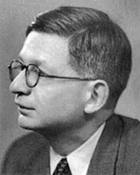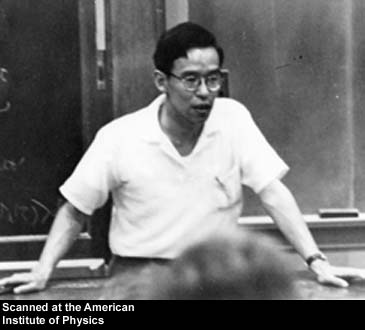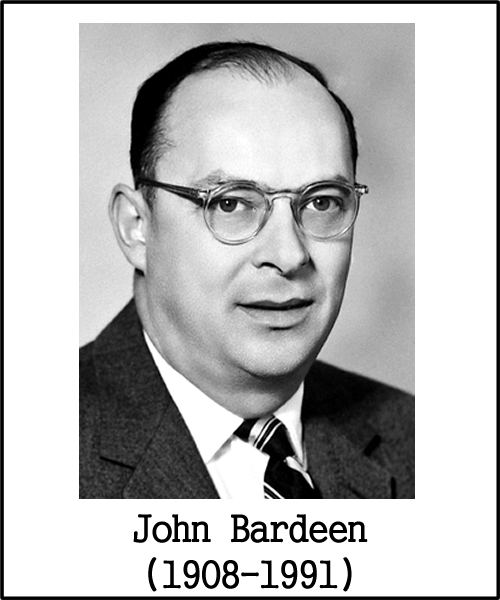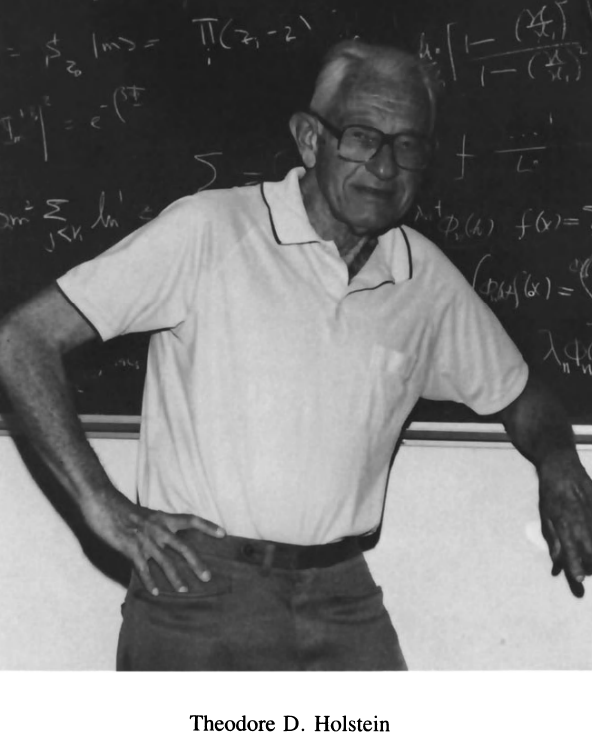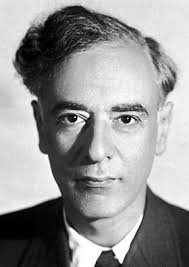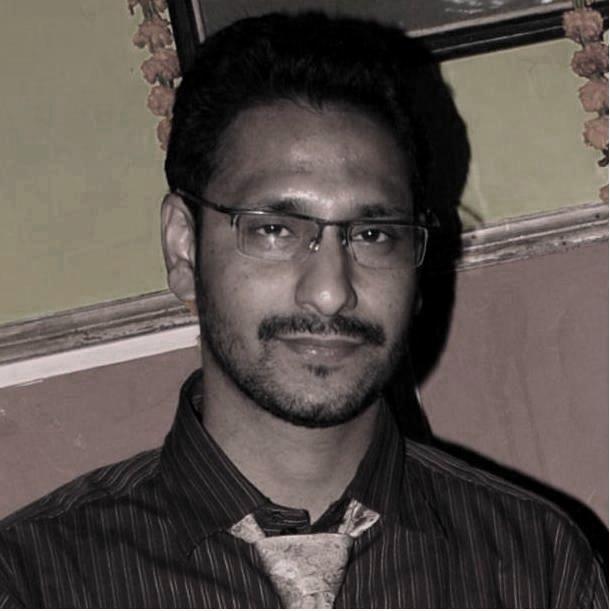 |
Navinder Singh Professor Tel: +91 (79) 2631 4457 Fax: +91 (79) 2631 4460 e-mail: navinder AT prl.res.in |
Condensed Matter Physics (Theory)
Current and near future research interests
- Anomalous electronic transport in the strange metal regime of (un)conventional superconductors
- Theory of (un)conventional superconductivity (i.e.in Cuprates, heavy fermions, and Fe based compounds)
ELECTRONIC TRANSPORT IN STRANGE METALS:: Electronic transport in simple metals can be understood using quasiparticle concept and the Bloch-Boltzmann kinetic theory. However, in strange metals (like, normal states of Cuprates, heavy fermion, and iron based superconductors) electronic transport mechanisms remain elusive. We are interested in such cases, and the Mori-Zwanzig memory function formalism can provide partial answers. However, the problems remain open.
A very basic introduction is given in:

THEORY OF (UN)CONVENTIONAL SUPERCONDUCTIVITY (i.e. in Cuprates, heavy electron materials, and Fe based compounds) Theory of conventional superconductivity known as BCS (Bardeen-Cooper-Schrieffer) theory is successful in explaining the superconducting behaviour of some metals and simple compounds. It cannot be applied to cuprates and Fe based compounds (called high temperature superconductors) as the pairing mechanisms in these new compounds are not due to phonons and it does not have an adequate foundation as normal state of these compounds shows non-Fermi Liquid behaviour. Understanding the physics of cuprates and Fe based compounds represent a long-standing and challenging problem in condensed matter physics. These materials are very poor conductors of electricity in their normal state but become superconducting at very high temperatures in comparison to conventional superconductors. Despite over 3 decades of research on the cuprates, a comprehensive microscopic theory does not exist and there is no consensus on their underlying pairing mechanism.
Arxiv Link
Arxiv Link
Recent publications
- The Gor’kov–Teitel’baum Thermal Activation Model for Cuprates: A review.
Navinder Singh. J Low Temp. Phys. (2024). DOI :10.1007/s10909-024-03188-w. - Pseudogap in Sr2−xLaxIrO4: Gor'kov-Teitel'baum thermal activation model.
Authors: Jalaja Pandya, Devarshi Dave, Navinder Singh. Phys Lett. A. Vol 507, 129469 (2024).. - Tunable phase transitions in half-Heusler TbPtBi compound.
Authors: Pratik D. Patel, Akariti Sharma, Bharathiganesh Devanarayanan, Paramita Dutta, Navinder Singh. J. Phys.: Condens. Matter, 35, 035501, (2023). - The case of itinerant magnetism in CaMn2Al10: self-consistent renormalisation (SCR) theory study
Authors: Bharathiganesh Devanarayanan, Akariti Sharma, Pratik D Patel1, and Navinder Singh. J. Phys.: Condens. Matter 34 465802 (2022). - Leading theories of the cuprate superconductivity: a critique
Authors: Navinder Singh. Physica C: Superconductivity and its applications, Vol. 580, 1353782 (2021). - The memory function formalism: an overview
Authors: Komal Kumari and Navinder Singh, Eur. J. Phys. Vol. 41, 053001 (2020). - A theory of resistivity in Kondo lattice materials: the memory function approach
Authors: Komal Kumari, Raman Sharma, Navinder Singh. Ref. J. Phys. Cond. Matt. Vol. 32. 425603 (2020).
Link - Resistivity of a 2d quantum critical metal
Authors: Komal Kumari, Raman Sharma, Navinder Singh. Ref. Phys. Lett. A. Vol. 383, 2645 (2019).
Link - Quantum oscillations of the Stoner susceptibility: theory
Authors: Ajeet Kumar, Raman Sharma, Navinder Singh Ref. Journal of Magnetism and Magnetic Materials, Vol. 487, 165302 (2019).
Link - Non-equilibrium electron relaxation in Graphene
Authors: Luxmi Rani, Pankaj Bhalla, Navinder Singh Ref. International Journal of Modern Physics B. Vol. 33, No. 17, 1950183 (2019).
Link - A Novel Effect of Electron Spin Resonance on Electrical Resistivity
Authors: Navinder Singh, Luxmi Rani. Ref. Journal of Magnetism and Magnetic Materials, Volume 474, Pages 501-504 (2019).
Link - A comparative study of finite frequency scattering rate from Allen, Mitrovic-Fiorucci, Shulga-Dolgov-Maksimov,
Sharapov-Carbotte and Goetze-Woelfle Memory Function formalisms
Authors: Pankaj Bhalla, Navinder Singh. Ref. Int. J. Mod. Phys. B. Vol. 33, 1950128 (2019).
Link - Dynamical electrical conductivity of graphene
Authors: Luxmi Rani and Navinder Singh. Ref. J. Phys: Cond. Matt. Vol. 29, 255602 (2017).
Link - Finite frequency Seebeck coefficient of metals: A memory function approach
Authors: Pankaj Bhalla, Pradeep Kumar, Nabyendu Das, Navinder Singh. Ref: Journal of Physics and Chemistry of Solids, Vol. 109, 31 (2017).
Link - Moment Expansion to the Memory Function for Generalized Drude Scattering rate
AAuthors: Pankaj Bhalla, Nabyendu Das, Navinder Singh. Ref. Physics Letters A, Vol. 380, 2000 (2016).
Link - Impurity induced resistivity upturns in underdoped cuprates
Authors: Nabyendu Das, Navinder Singh. Ref. Phys. Lett. A, Vol. 380, 490 (2016).
Link
Selected publications
Zwanzig-Mori-Woelfle-Goetze Memory Function Formalism
- Memory Function Approach to Correlated Electron Transport: A Comprehensive Review
Nabyendu Das, Pankaj Bhalla, and Navinder Singh, Int. J. Mod. Phys. B Vol 30, 1630015 (2016). - Theory of the dynamical thermal conductivity of metals
Pankaj Bhalla, Pradeep Kumar, Nabyendu Das, and Navinder Singh, Phys. Rev. B. Vol 94, 115114 (2016). - Generalized Drude Scattering rate from the memory function formalism: an independent verification of the Sharapov-Carbotte result
Pankaj Bhalla and Navinder Singh, EPJB, 89 (2016) 49. -
Moment Expansion to the Memory Function for Generalized Drude Scattering rate
Pankaj Bhalla, Nabyendu Das, Navinder Singh, Physics Letters A, Vol. 380, 2000 (2016). - Hot electron relaxation in metals within the Goetze-Woelfle memory function formalism
Nabyendu Das, Navinder Singh, Int. J. Mod. Phys. B, Vol. 30, 1650071 (2016).
DC/Optical properties in the pseudogapped state of Cuprates using Yang-Rice-Zhang ansatz
- Impurity induced resistivity upturns in underdoped cuprates
Nabyendu Das, Navinder Singh, Phys Lett A, 380 (2016) 490. - Optical conductivity of cuprates from Yang-Rice-Zhang ansatz: Comparison with experiment
Navinder Singh, Phys. Lett. A 378 (2014) 2795. - Infrared properties of cuprates in the pseudogap state: A study
of Mitrovic-Fiorucci and Sharapov-Carbotte scattering rates
Pankaj Bhalla and Navinder Singh, EPJB 87 (2014)213. - Optical conductivity of cuprates in the pseudogap state:
Yang-Rice-Zhang model and antiferromagnetic spin waves
Navinder Singh and Raman Sharma, AIP conference proceedings, ICCMP-2014.
Lagrangian approach to nonequilibrium statistical mechanics and Fluctutuation Theorems:
- Onsager-Machlup theory and work fluctuation theorem for a harmonically driven Brownian particle.
Navinder Singh, J. Stat. Phys. (2008) 131: 405-414. - Dynamical fluctuations for periodically driven diffusions
Navinder Singh, Bram Wynants, J. Stat. Mech. (2010) P03007
Open Quantum Systems: Quantum Effects in Biology
- Efficient Computational Approach to the Non-Markovian
Second-Order Quantum Master Equation: Electronic Energy Transfer in Model Photosynthetic Systems.
Navinder Singh, Paul Brumer, Mol. Phys. (2012), in press; arXiv:1106.5911 - Electronic energy transfer in model photosynthetic systems: Markovian vs. non-Markovian dynamics
Navinder Singh, Paul Brumer, Faraday Disc. Vol. 153, 41 (2011).
Phase Transitions and Critical Phenomena:
- Transverse diffusion induced phase transition in asymmetric exclusion process on a surface.
Navinder Singh, Somendra M Bhattacharjee, Phys. Lett. A 373 (2009) 3113-3117.
(Non)equilibrium electron dynamics in metals:
- Two-Temperature Model of non-equilibrium electron relaxation: A Review
Navinder Singh, Int. J. Mod. Phys. B., Vol. 24, No. 9 (2010) 1141-1158 - Dissipative electron-phonon system photo-excited far from equilibrium.
Navinder Singh and N. Kumar, J. Stat. Mech. L06001(2005). - Hot Electron relaxation in a metal nanoparticle: Electron surface-phonon interaction.
Navinder Singh, Mod. Phys. Lett. B, Vol. 18, 1261(2004).
Random Matrix Theory (applied mathematics):
- Non-Hermitean Wishart random matrices (I)
Eugene Kanziepe, Navinder Singh, J. Math. Phys. Vol. 51, 103510 (2010)
Miscellaneous
- Phase controllable dynamical localization: a generalization of the Dunlap-Kenkre result.
Navinder Singh, Phys. Lett. A, Vol. 376, 1593 (2012); arXiv:1110.6799. - Controllable diffusion of cold atoms in a harmonically driven and tilted optical lattice: Decoherence by spontaneous emission.
Navinder Singh, J. Phys. A: Math. theor. 41 (2008) 255001. - How and why does statistical mechanics work.
Navinder Singh, arXiv:1103.4003.(Foundations of Statistical Mechanics). - Thermodynamical Phase transitions, the mean-field theories, and the renormalization (semi)group: A pedagogical introduction
Navinder Singh, arXiv:1402.6837 (2015).
Popular Science
- A Concise History of the Black-body Radiation Problem.
Himanshu MavaniNavinder Singh, Resonance - Journal Of Science education, General Article Volume 29 Issue 5 May 2024 pp 645-670 (2024). - Quantum transport in mesoscopic systems: Coulomb Blockade and Kondo effect. (in English).
Navinder Singh, Resonance, November, page 988, (2010). - When a star dies? (in Punjabi).
Navinder Singh, Tarksheel, March to Aprail, page 2425, (2001). - What is science, and how it was developed. (in Punjabi)
Navinder Singh, Tarksheel, Jan. to Feb., page 11, (2010).
Teaching (Research in physics requires thorough training in core-courses and we try our best to prepare our students; here are some courses delivered by me with suggested books):
- Selected Topics in (non)equilibrium statistical mechanics--year(s) 2016. (Books: Kubo's, Zwanzig's)
- Mathematical Mehods--year(s) 2014. (Books: Arfken-Weber)
- Classical Mechanics--year(s) 2013 (Preferred books: Landau-Lifshitz's; Herbert Goldstein's)
- Quantum Theory of Many-Particle Systems--year(s) 2012 (Preferred books: Fetter and Walecka's; G. D. Mahan's)
- Statistical Mechanics--year(s) 2011 (Preferred books: Landau-Lifshitz's; Fundamentals of Statistical Mechanics--manuscript and lecture notes of Felix Bloch)
My Heros:
